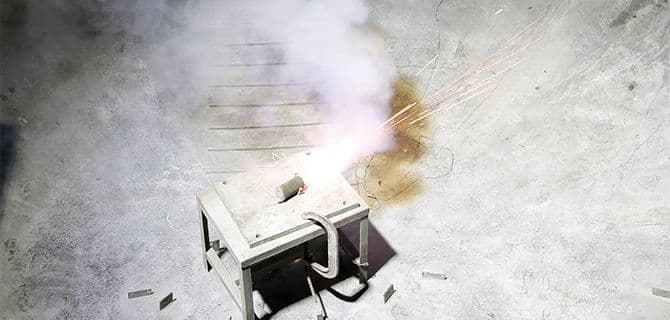The military uses smoke grenades in dangerous situations to provide cover for people and tanks on the move. But the smoke arms race is on. Increasingly, assailants are using sophisticated infrared or thermal detection devices that can see through standard smoke. Now, researchers report developing a new kind of smoke that obscures both visible and […]

The military uses smoke grenades in dangerous situations to provide cover for people and tanks on the move. But the smoke arms race is on. Increasingly, assailants are using sophisticated infrared or thermal detection devices that can see through standard smoke. Now, researchers report developing a new kind of smoke that obscures both visible and thermal detection.
Watch Zach Zander Explain This Research at the 255th National Meeting & Exposition of the American Chemical Society
The military uses smoke grenades in dangerous situations to provide cover for people and tanks on the move. But the smoke arms race is on. Increasingly, sensors can now go beyond the visible range into the infrared (IR) region of the spectrum. Today, researchers report developing a new kind of smoke that obscures both visible and IR detection.
To build a better puff of smoke, Zander and his colleagues in the Smoke & Obscurants, Pyrotechnics, and Chemical Biological Filtration Branches started thinking about using a metal organic framework (MOF). Other scientists working at his institute, the U.S. Army’s Edgewood Chemical Biological Center, have been studying these stable porous structures and were working with one called UiO-66 that was made up of terephthalic acid, a known visible obscurant.
The rest of UiO-66 consists of large pores and a zirconium node that researchers proposed could absorb in the IR range. The question was whether UiO-66 would burn in such a way as to liberate the terephthalic acid from the framework, creating a smoke with both an IR-absorbing agent and a visible light obscurant. If the UiO-66 molecule didn’t break apart, the terephthalic acid wouldn’t be free to block the visible light.
In a proof-of-principle experiment, the researchers packed UiO-66 into a grenade along with the pyrotechnic agents that generate the burn. They placed it in a 249-cubic-yard chamber lined with sensors and set off the smoke grenade. Researchers noted some blockage in the visible range, though it wasn’t as good as a true terephthalic acid grenade. Next, the researchers want to improve the grenades’ performance by changing the recipe of the pyrotechnic portion and to better liberate the terephthalic acid from the framework. In the long term, the researchers plan to continue incorporating additional obscurants to the smoke, creating a kind of “Swiss army knife” of smoke grenades that can block multiple spectra at once.
